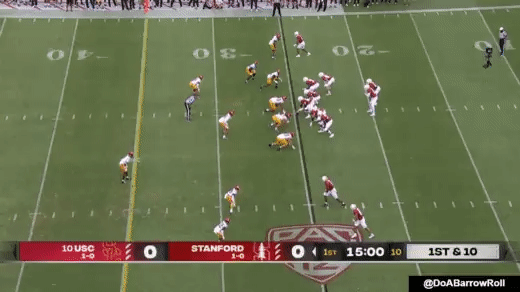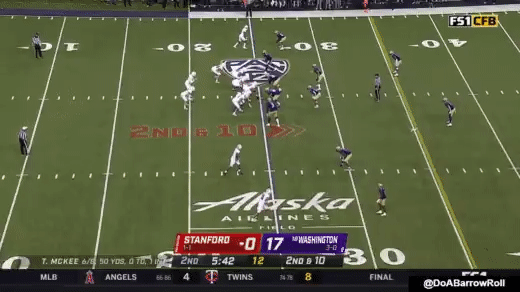The ever-devastating RPO draw play
Wake Forest's RP-slow scheme is ultimately a fantastic new wrinkle on the oldest shotgun running play, the draw.
Let’s talk a little more about the Wake Forest “RP-slow” offense because I watched how Stanford has now also incorporated the slow mesh scheme from the Demon Deacons and have fleshed out just a few more thoughts on it.
For starters, as I noted Monday, it’s really a running back draw play. At least that’s the run game concept. When Wake Forest, or Stanford, run other RPOs off other run concepts you don’t get the same slow mesh with the quarterback slow playing whether he’s handing off or not while drifting toward the line of scrimmage with the running back.
For instance, here’s Stanford running a normal RPO play.
The goal of the twin receivers on the bottom is to hold the attention of the nickel so he can’t join the run fit. Stanford doesn’t look that way here. On the boundary the quarterback reads the safety to see if he joins the run fit, when he does he punishes the defense for this aggression by taking a shot 1-on-1 to the boundary-side receiver.
Counter runs don’t work with the slow-playing mesh, although the quarterback Tanner McKee does hold this one in there a little long. The back needs to get moving and hit the hole hard. The same is true for many runs from the shotgun, the running back isn’t going to have success if he has to wait forever for the quarterback to figure out what to do.
But on a draw? Normally the back is at a standstill like he’s pass-blocking before receiving the ball anyways. Let’s get back to that in a moment.
I’ve long believed the draw is potentially the most effective run scheme for an RPO because it’s properly pass-first in concept. You want to throw the ball if there’s an opening with the run as a fallback to collect a positive gain if the defense takes away the more efficient play (the pass). This RP-slow draw scheme is really pushing forward my underlying theory in a new way.





